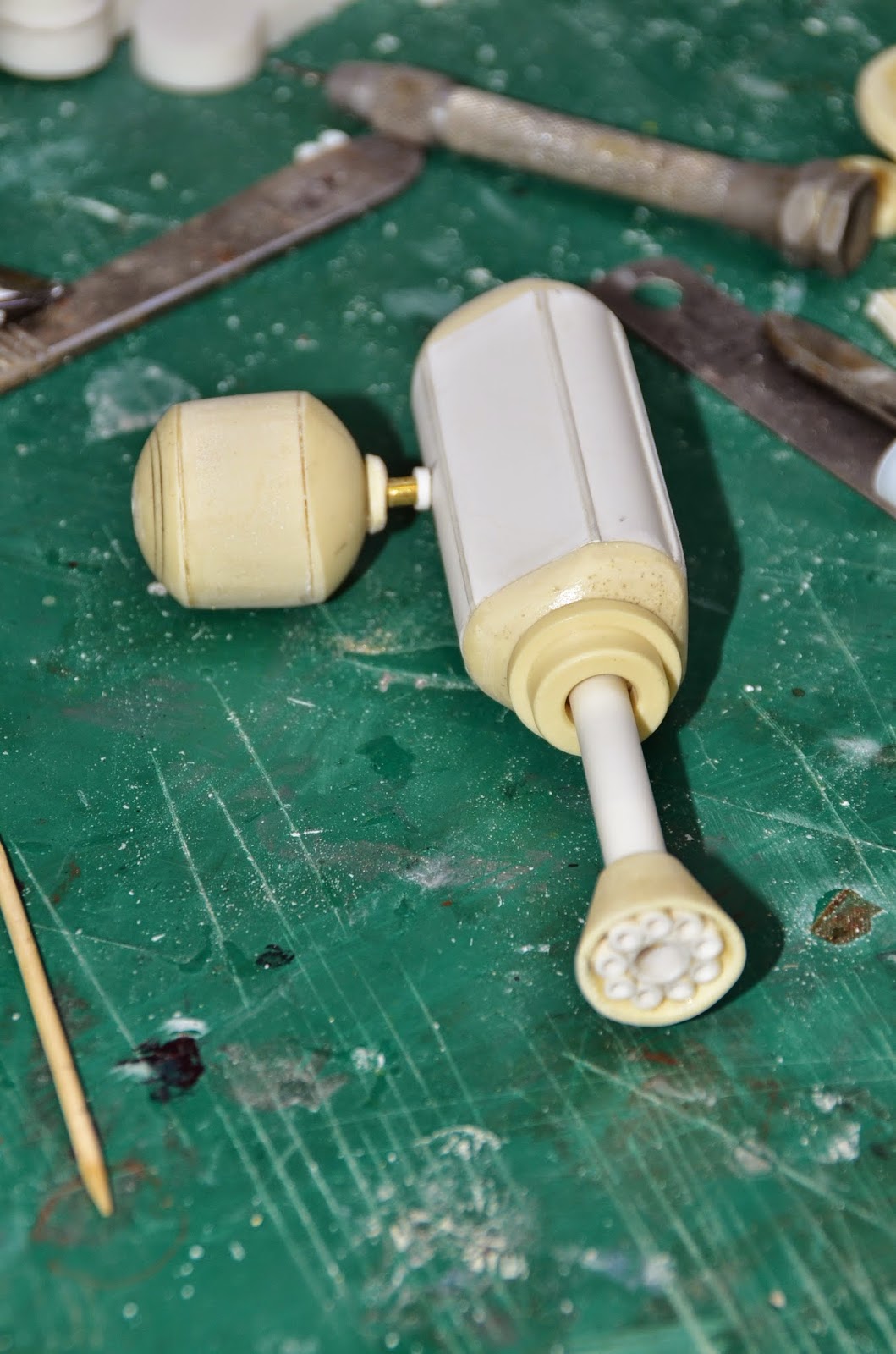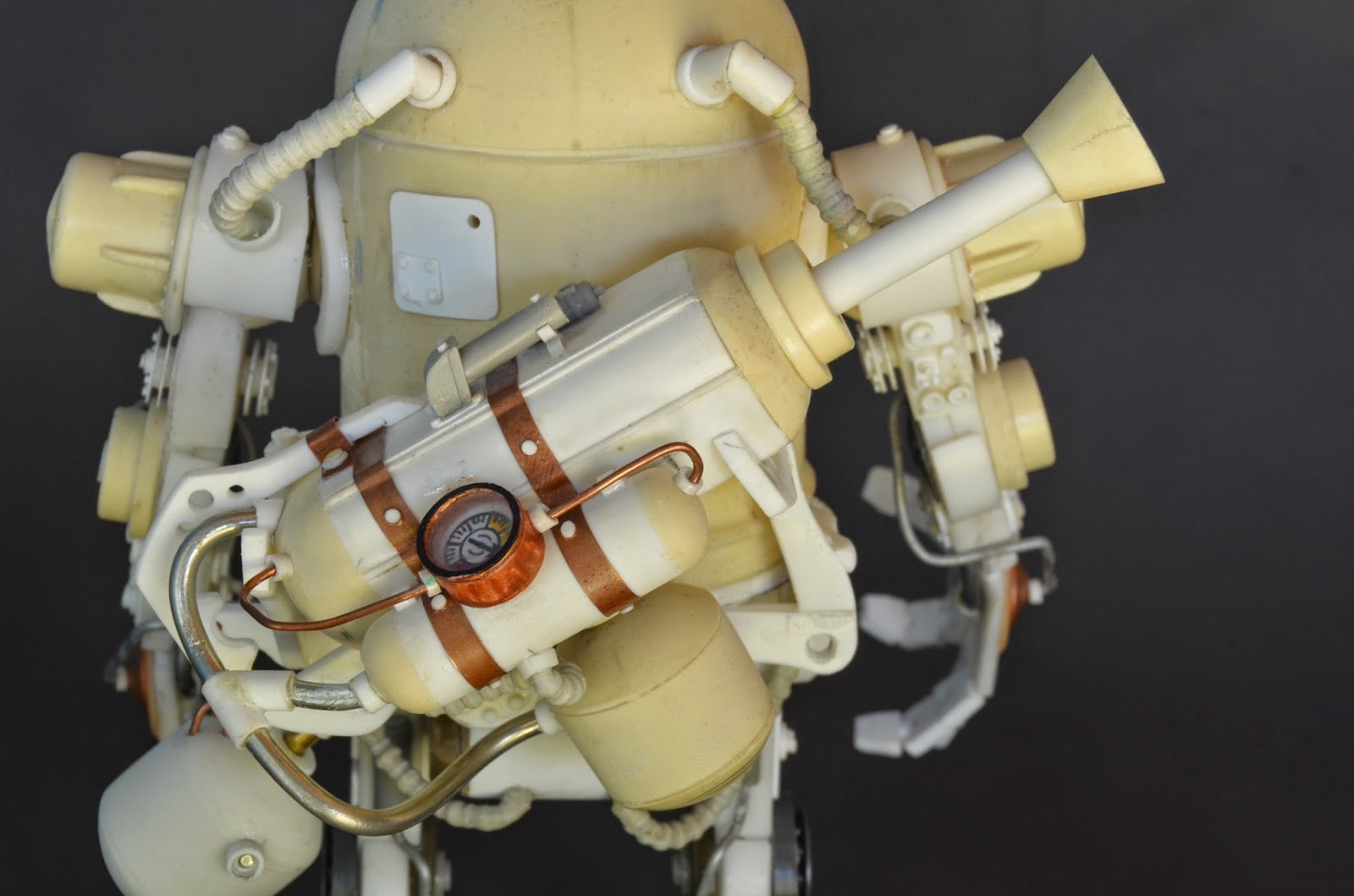My grandson's birthday is coming up and we had talked about making a model of Dr. Zomboss (the Egyptian version), and this would be a really complex build but that's what you do for a great kid don't you? However, he is aware that my favourite dinosaur is the Stegosaurus so he changed his mind and decided that a zombie dressed in a stegosaurus suit would be something that both of us would enjoy, what a nice thoughtful boy. Above is the full sized sketch for the model and this time it is the right way around, woo hoo!
I put a zombie together for the job but the only head I had at the time without casting a new one was this rather sad mess. It had come about because the resin was either old or not thoroughly mixed and there are flaws all over it. These were cleaned up with some Apoxie Sculpt and the limbs were added in a suitable zombie reaching out for brains, pose. The fingers were plastic tubes bent in a candle flame and slotted onto stubs of rod previously attached in their finger positions.
As per the sketch at the beginning, a spine of galvanized wire was attached and curved to allow the fill materials a structure to follow. This spine is reinforced with a loop of wire and soldered in place. Now the form of the body is established and the bulking up process can begin.
The top photo shows foil being attached with hot glue and tie wire. The lower one shows the plastic beak which allows putty to be placed in an overlapping fashion for the snout of the steg. Teeth and gums have been inserted to give the true zombie appeal that we all know and love.
Now apart from the plates on its back, what makes this creature unique is its "Thagomizer", or those four spines at the end of its tail. The popular cartoonist Gary Larson( of The Far Side fame), used the term "thagomizer" in a cartoon to describe what killed poor old Thag, and palaeontologists really took the word to heart and it is now recognized in the lexicon of palaeo terms. Isn't that great?
More putty added and the look of a costume suit hinted at in the heavy join line at the front.
The steg's head has been modelled with pearly beads inserted as eyes. All that needs doing now are the limbs covered, feet completed in some sort of 'over the shoe' claws and of course, the back plates.
I see in this pic that the hands need some work to blend the junctions of the fingers.
How I made the plates. I drew them up in size on a piece of egg carton cardboard, coated this with super glue on both sides and cut them out. The glue really stiffens any porous surface and is especially good for sealing plaster, it makes it feel like ivory or plastic. I'm not sure that this cardboard was the best choice as it is a bit too textured in the end, but I stuck with it as the easiest option.
Well here is the finished model minus a paint job. The balance of the figure was such that it needed to lean forward to look any good so an appropriate angled plaster piece was used and the zombie was attached by the projecting wire built into its foot. Large buttons were added to the suit to give the appearance of a somewhat baggy, illfitting affair that only a zombie would wear. His fingers have been suitably knobbed at the joints and there are a few rips and tears at knee and elbow.
The feet are obviously over his shoes and are clawed and gnarly.
A final view with a bright red paint job using both Citadel and Vallejo acrylics without too much layering or blending. The checkerboard base is something that I like and having used it in the Cool Dude Zombie with Pawpaw, it's a keeper and may just be seen again if I make a Tricera-Zombie.
What next? A series could be in the offing but don't hold your breath.

































































